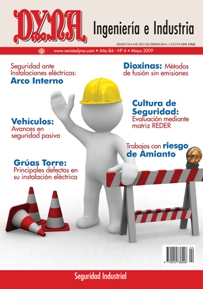OCCUPATIONAL SAFETY AND LEGAL FRAMEWORK. THE DIVORCE?
Keywords:
integración, prevención de riesgos laborales, gestión general de la empresaAbstract
The debate turns around the following subject, the determination criteria that must manage the organizational modalities of prevention, covered by European Community legislation. More accurately, if the famous Article 7 of the Framework Directive, about labour risks prevention, imposes an order on hierarchical organizational modalities for company’s employees’ designation. This will materialize two positions: On the one hand, several European states defend that Prevention Management should subcontract specialized outsource entities. On another hand, the European Commission maintains the position that it is essential to integrate preventive management in the companies’ activity; which means assuming prevention internally and not "subcontracted." In this article we support the second position. Beyond the legal considerations underlying this position, we think that it leads us to a higher level of Prevention Management practices, and therefore to better results for companies. Moreover, we intend to go deeper into the knowledge of the PM practices and their relation with the integration of prevention in the company’s activity. In any case it must be emphasized, as a desirable element, in the controversy developed at European level about how to undertake preventive management, that there should be an analytic analysis reinforcing the positions held by the European Commission.Downloads
Published
2009-05-05
Issue
Section
ARTICULOS

